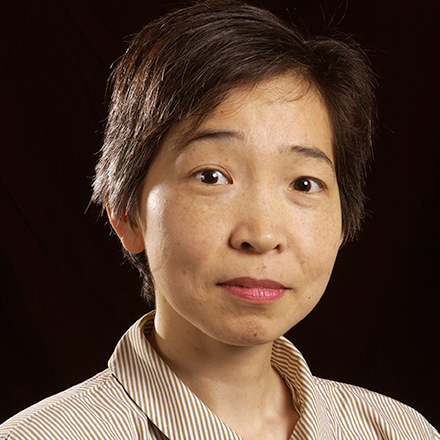Hiromi Kagawa

Research Scientist
Disciplines: Biology
Degree/Major: Ph.D., Biochemistry, Tokyo Institute of Technology, Japan
Curriculum vitae: Kagawa-CV2008.pdf
hkagawa@seti.orgWhat are the physical and chemical limits of life? After all, some microbes are happy to live at temperatures that boil water. Molecular biologist Hiromi Kagawa studies extremophiles, organisms that live in what we consider to be very unusual conditions, such as extreme heat or cold, environments that are very dry, are highly acidic, or are subject to massive amounts of radiation. The hardy organisms that can manage to thrive in such conditions could give us essential clues to how life might cope with tough environments on other worlds, and possibly how we might co-opt some of these survival strategies for protecting ourselves during space flight to other planets.
In particular, Hiromi is studying an extremophile microbe known as Sulfolobus shibatae, originally isolated from an acidic hot spring in Japan. Its acid-resistant envelope and powerful proton pump keep the interior of this diminutive life form at a neutral pH even in extremely acidic, near-boiling environments. Its biomolecules, including lipids and proteins, are naturally heat stable or stabilized by some still-mysterious mechanism, and understanding the latter is one of the goals of Hiromi’s research.
Extreme environments on Earth might be normal environments in the cosmos. By studying the coping mechanisms of the life that can survive in such hostile habitats, we could be studying aliens on Earth.
McMillan RA, Howard J, Zaluzec NJ, Kagawa HK, Mogul R, Li YF, Paavola CD, Trent JD. A self-assembling protein template for constrained synthesis and patterning of nanoparticle arrays (2005) J Am Chem Soc. 127(9) 2800-1.
Trent JD, Kagawa HK, Paavola CD, McMillan RA, Howard J, Jahnke L, Lavin C, Embaye T, Henze CE, 2003. Intracellular localization of a group II chaperonin indicates a membrane-related function. Proc Natl Acad Sci U S A. 100,15589-94
Kagawa HK, Yaoi T, Brocchieri L, McMillan RA, Alton T, Trent JD, 2003. The composition, structure and stability of a group II chaperonin are temperature regulated in a hyperthermophilic archaeon. Mol Microbiol.48, 143-56
Dalton JB, Mogul R, Kagawa HK, Chan SL, Jamieson CS, 2003. Near-infrared detection of potential evidence for microscopic organisms on Europa. Astrobiology.3, 505-29.
Takuro Yaoi, T. Alton, A. Jiemjit, Hiromi K. Kagawa, P. Laksanalamai, Jonathan D. Trent, 2000. Cloning and Characterization of ftsZ and pyrF from the Archaeon Thermoplasma acidophilum Biochemical and Biophysical Research Communication275, 936-945.
Jonathan Trent, Hiromi K. Kagawa, Takuro Yaoi, 1998. The Role of Chaperonins in Vivo: The Next FrontierAnnals of the New York Academy of Sciences851, 36-47.
Takuro Yaoi, Hiromi K. Kagawa, Jonathan D. Trent, 1998. Chaperonin Filaments: Their Formation and an Evaluation of Methods for Studying Them Archives of Biochemistry and Biophysics356, 55-62.
Koeck PJ, Kagawa HK, Ellis MJ, Hebert H, Trent JD, 1998. Two-dimensional crystals of reconstituted beta-subunits of the chaperonin TF55 from Sulfolobus shibatae. Biochim Biophys Acta. 1429, 40-4
Trent JD, Kagawa HK, Yaoi T. 1998. The role of chaperonins in vivo: the next frontier. Ann N Y Acad Sci.851, 36-47
Trent JD, Kagawa HK, Yaoi T, Olle E, Zaluzec NJ, 1997. Chaperonin filaments: the archaeal cytoskeleton?Proc Natl Acad Sci U S A.94, 5383-8.
Hiromi K. Kagawa, Andrzej Joachimiak, Natalia Maltsev, Jerzy Osipiuk, Ross Overbeek, Elsie Quaite-Randall, Jonathan D. Trent, 1995. The 60 kDa Heat Shock Proteins in the Hyperthermophilic Archaeon Sulfolobus shibatae Journal of Molecular Biology253, 712-725.
Kagawa, Hiromi. "Life in Japan's Acidic Hot Springs," SPACE.com, September 1, 2005.
